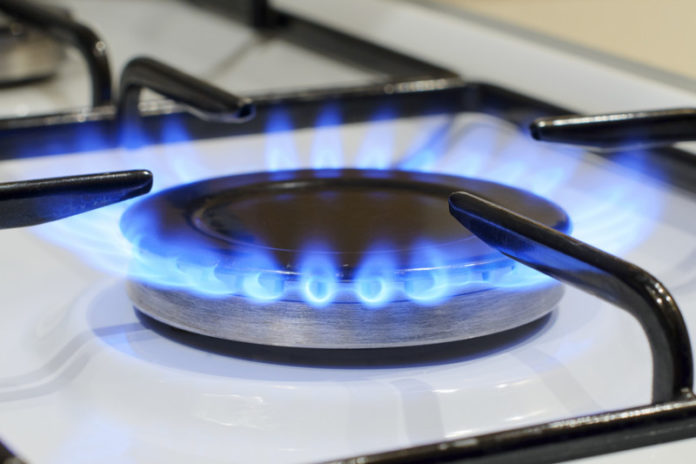
Parents with children at home should use ventilation when cooking with a gas stove, researchers from Oregon State University are recommending, after a new study showed an association between gas kitchen stove ventilation and asthma, asthma symptoms and chronic bronchitis.
“In homes where a gas stove was used without venting, the prevalence of asthma and wheezing is higher than in homes where a gas stove was used with ventilation,” said Ellen Smit, an associate professor in the College of Public Health and Human Sciences at OSU and one of the study’s authors. “Parents of all children should use ventilation while using a gas stove.”
Researchers can’t say that gas stove use without ventilation causes respiratory issues, but the new study clearly shows an association between having asthma and use of ventilation, Smit said. More study is needed to understand that relationship, including whether emissions from gas stoves could cause or exacerbate asthma in children, the researchers said.
Asthma is a common chronic childhood disease and an estimated 48 percent of American homes have a gas stove that is used. Gas stoves are known to affect indoor air pollution levels and researchers wanted to better understand the links between air pollution from gas stoves, parents’ behavior when operating gas stoves and respiratory issues, said Eric Coker, a doctoral student in public health and a co-author of the study.
The study showed that children who lived in homes where ventilation such as an exhaust fan was used when cooking with gas stoves were 32 percent less likely to have asthma than children who lived in homes where ventilation was not used. Children in homes where ventilation was used while cooking with a gas stove were 38 percent less likely to have bronchitis and 39 percent less likely to have wheezing. The study also showed that lung function, an important biological marker of asthma, was significantly better among girls from homes that used ventilation when operating their gas stove.
Many people in the study also reported using their gas stoves for heating, researchers found. That was also related to poorer respiratory health in children, particularly when ventilation was not used. In homes where the gas kitchen stove was used for heating, children were 44 percent less likely to have asthma and 43 percent less likely to have bronchitis if ventilation was used. The results did not change even when asthma risk factors such as pets or cigarette smoking inside the home were taken into account, Coker said.
“Asthma is one of the most common diseases in children living in the United States,” said Molly Kile, the study’s lead author. Kile is an environmental epidemiologist and assistant professor at OSU. “Reducing exposure to environmental factors that can exacerbate asthma can help improve the quality of life for people with this condition.”
The findings were published recently in the journal “Environmental Health.” Co-authors included John Molitor and Anna Harding of the College of Public Health and Human Sciences and Daniel Sudakin of the College of Agricultural Sciences. The research was supported by OSU.
Researchers used data from the Third National Health and Nutrition Examination Survey, or NHANES, conducted by the National Center for Health Statistics from 1988-1994. Data collected for NHANES is a nationally representative sample of the U.S. population.
The third edition of the survey is the only one in which questions about use of gas stoves were asked, Coker said. Participants were interviewed in their homes and also underwent physical exams and lab tests.
Researchers examined data from about 7,300 children ages 2-16 who has asthma, wheezing or bronchitis and whose parents reported using a gas stove in the home. Of those who reported using no ventilation, 90 percent indicated they did not have an exhaust system or other ventilation in their homes, Coker said.
Even though the study relies on older data, the findings remain relevant because many people still use gas stoves for cooking, and in some cases, for heat in the winter, the researchers said.
“Lots of older homes lack exhaust or other ventilation,” Coker said. “We know this is still a problem. We don’t know if it is as prevalent as it was when the data was collected.”
Researchers suggest that future health surveys include questions about gas stove and ventilation use. That would allow them to see if there have been any changes in ventilation use since the original data was collected.
“More research is definitely needed,” Coker said. “But we know using an effective ventilation system will reduce air pollution levels in a home, so we can definitely recommend that.”
Story Source:
The above story is based on materials provided by Oregon State University. Note: Materials may be edited for content and length.
Journal Reference:
- Molly L Kile, Eric S Coker, Ellen Smit, Daniel Sudakin, John Molitor, Anna K Harding. A cross-sectional study of the association between ventilation of gas stoves and chronic respiratory illness in U.S. children enrolled in NHANESIII. Environmental Health, 2014; 13 (1): 71 DOI: 10.1186/1476-069X-13-71
